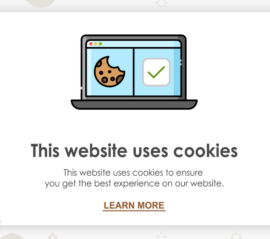Probably not, and the same holds true for your organization’s content. Blocks of text can be intimidating and boring to some—making your audience much less likely to engage.
Enter the world of infographics. Infographics have become an extremely popular storytelling medium and a staple in modern marketing strategies, especially in the chemical and life sciences industry. An infographic is defined as a chart, diagram, or illustration that uses graphic elements to present information in a visually striking way.
Infographics can explain processes or timelines, highlight information and key metrics, or compare a range of concepts. As such, they are perfect for breaking down complex information in the chemical and life sciences.
If you’re looking to spruce up your brand strategy, using these visuals is a great way to do just that. Here are 10 compelling reasons you should be incorporating infographics in your science marketing strategy.
Appeal to humans’ visual inclinations
It’s no secret that humans are highly visual creatures. We’re biologically programmed to constantly consume information primarily through visual cues. According to MIS, humans process visuals 60,000x faster than text, which makes any type of visual content a solid choice.
Make information more accessible
Infographics are the ideal medium for breaking down and highlighting information, including data and numbers, timelines, processes, and instructions. This can be particularly vital for the dense and complex information often covered in the chemical and life sciences. It’s no wonder Adobe reported image-based posts receive 650% higher engagement than text-only.
Persuade your audience
Because infographics are so visually appealing and scannable, they make it easier for your audience to make quick connections between your main points and the call to action. Presentations with visual aides were found to be 43% more persuasive in a study by MIS, and can complement messaging that speaks to your audience’s specific needs.
Establish brand authority and thought leadership
A Stackla survey showed 86% of customers said authenticity is a key factor in deciding which brands to support, proving customers have become increasingly wary of advertising. Infographics offer the perfect opportunity to create content that’s more educational and less promotional in nature. Educating your target audience about a scientific topic gives your audience something they actually want, while establishing your brand’s authority and elevating its position as a thought leader.
Repurpose and reinforce content
Infographics are an ideal tactic to complement others in your science marketing campaign. Repurposing long-form content, such as white papers, in an infographic format gives you a chance to make the information more accessible. This not only gives your target audience another chance to engage with the content (thus reinforcing the key messages), it also gives you another chance to reach potential audiences you may have missed the first time.
Make your content highly sharable
Infographics are a highly sharable form of content that can be used anywhere from board rooms to blog posts. According to OneSpot, infographics can increase web traffic by up to 12%. But the shareability doesn’t stop there—infographics are perfect for social media.
Go viral
Social media is the ideal platform for infographics because it’s meant to transmit small, quick snippets of information. Highly digestible and sharable content like infographics tend to perform well on social media. In fact, infographics are liked and shared on social media 3x more than any other type of content.
Improve your SEO
Infographics are a great opportunity to include keywords and backlinks to your website, which in addition to increasing web traffic, also indicate to search engines that your site is a valuable source of information. This, in turn, encourages engines to rank your site higher in search results. Infographics also give you the opportunity to rank in image search results for a more diverse range of access points.
Reinforce your brand image
As a largely visual exercise, infographics give you a chance to incorporate design and visual elements that reinforce your brand’s look and feel. This is a chance for your design team to flex their skills, incorporating current design trends or even animation that brings your story to life. Animated infographics can encourage interactivity, which in turn leads to higher engagement.
Be flexible and have fun
Infographics offer a chance to break out of the norm and explore more playful ways of storytelling than your usual methods. This gives you more freedom than usual in the chemical and life sciences industry. You can draw unique comparisons and analogies that wouldn’t necessarily work in content like a white paper. Using quirky or whimsical images and copy can be a lighthearted departure from your brand’s typical voice, and that’s okay in this medium.
If you’re looking for interesting ways to revamp your science marketing strategy, consider including infographics. They are the perfect way to reinforce scientific content in a highly engaging visual format that establishes brand authority and thought leadership. In today’s distracted world, they might be just the tactic you need to catch your audience’s eye—and change their mind.
Keywords: Digital Strategies, infographics, science marketing
 Subscribe
Subscribe





